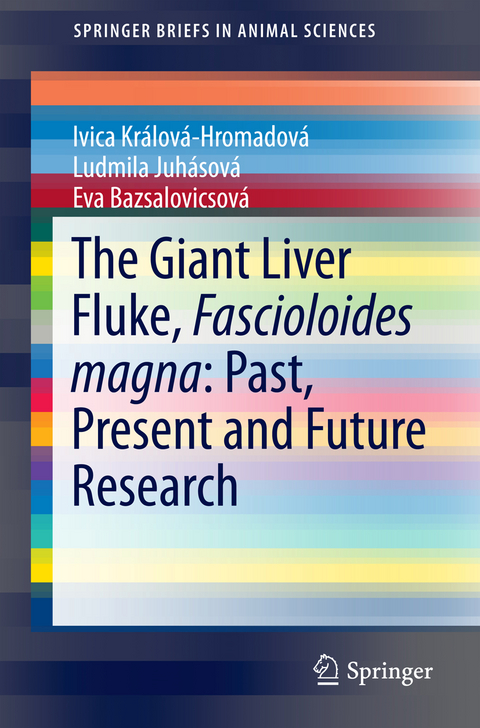
The Giant Liver Fluke, Fascioloides magna: Past, Present and Future Research
Springer International Publishing (Verlag)
978-3-319-29506-0 (ISBN)
Ivica Králová-Hromadová, Ľudmila Zvijáková, Eva BazsalovicsováSlovak Academy of Sciences, Kosice, Slovakia
PREFACE.- GENERAL INFORMATION.- 1.1.Systematics and morphology.- 1.2. Life cycle 1.3. Pathology.- 1.4. Therapy.- DISTRIBUTION OF FASCIOLOIDES MAGNA.- 2.1. North America.- 2.2. Europe.- DEFINITIVE HOSTS.- 3.1. North America.- 3.1.1. Natural and experimental infections.- 3.2. Europe.- 3.2.1. Natural and experimental infections.- INTERMEDIATE HOSTS.- 4.1. North America.- 4.1.1.Natural infections.- 4.1.2. Experimental infections.- 4.2. Europe.- 4.2.1. Natural infections.- 4.2.2. Experimental infections.- MOLECULAR STUDIES AND KARYOLOGY.- 5.1. Standard and molecular cytogenetics.- 5.1.1. Basic karyological characteristics.- 5.1.2. Chromosomal localization of ribosomal genes.- 5.2. Ribosomal genes.- 5.2.1. Structure and application of ribosomal genes.- 5.2.2. Ribosomal DNA in molecular taxonomy of F. Magna.- 5.3. Mitochondrial genes.- 5.3.1. Structure and application of mitochondrial DNA.- 5.3.2. Mitochondrial DNA in F. magna biogeography.- 5.4. Microsatellites.- 5.4.1. Structure and application of microsatellites.- 5.4.2. Microsatellites in studies of genetic interrelationships of F. Magna.- CONCLUSION.
| Erscheinungsdatum | 08.10.2016 |
|---|---|
| Reihe/Serie | SpringerBriefs in Animal Sciences |
| Zusatzinfo | XII, 106 p. 16 illus. |
| Verlagsort | Cham |
| Sprache | englisch |
| Maße | 155 x 235 mm |
| Themenwelt | Medizin / Pharmazie ► Medizinische Fachgebiete ► Mikrobiologie / Infektologie / Reisemedizin |
| Naturwissenschaften ► Biologie ► Genetik / Molekularbiologie | |
| Naturwissenschaften ► Biologie ► Mikrobiologie / Immunologie | |
| Naturwissenschaften ► Biologie ► Zoologie | |
| Schlagworte | adaptation of parasites • Animal Genetics and Genomics • Animal physiology • Biomedical and Life Sciences • free-living and domestic ruminants • host-parasite interaction • Parasitology • spatial distribution of parasites • veterinary parasite |
| ISBN-10 | 3-319-29506-3 / 3319295063 |
| ISBN-13 | 978-3-319-29506-0 / 9783319295060 |
| Zustand | Neuware |
| Haben Sie eine Frage zum Produkt? |
aus dem Bereich


